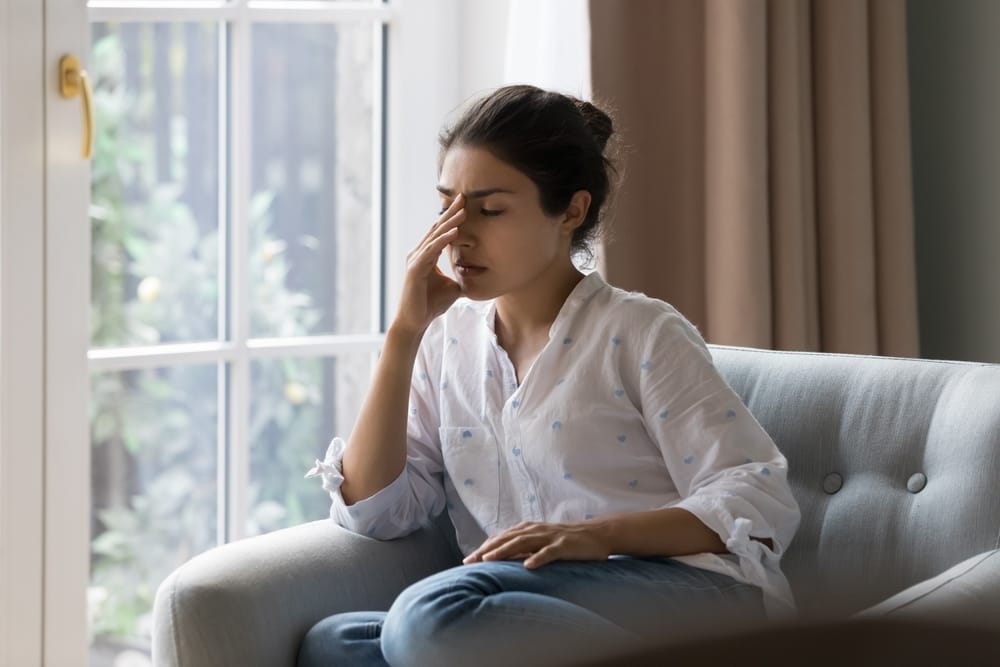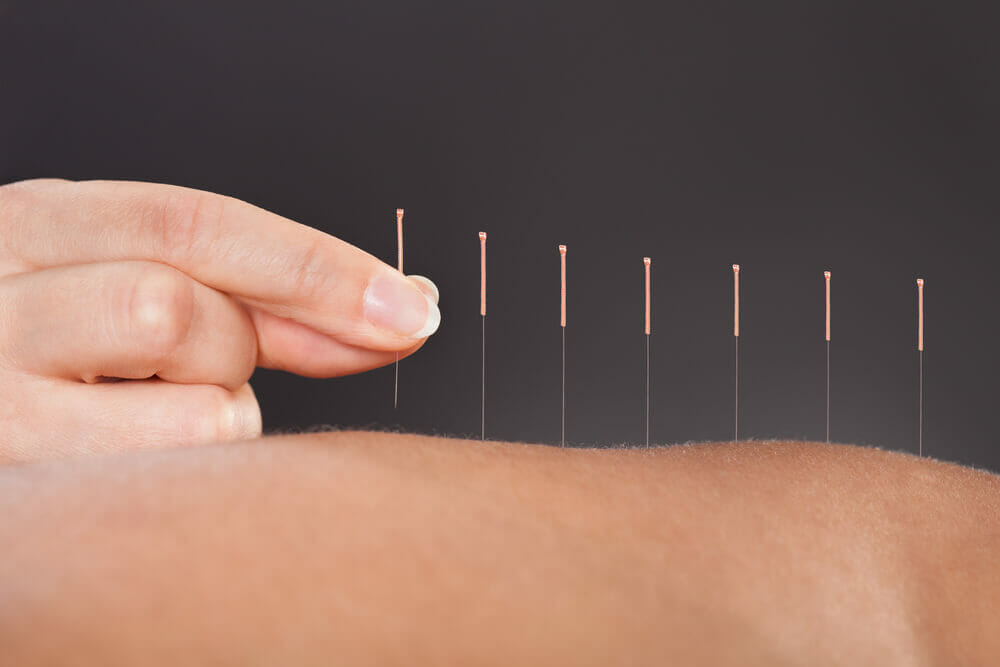
Migraines can be a debilitating challenge for many, with intense pain that disrupts daily life and often eludes relief.
These aren’t just ordinary headaches; they’re often accompanied by symptoms like nausea, light sensitivity, and visual disturbances, making even simple tasks impossible to tackle.
If you regularly suffer with migraines, you’ve probably tried a range of things in the search for effective treatment. Dry needling for migraines, while distinct from more ‘traditional’ methods of migraine treatment, can help alleviate some pain and muscle tension.
Why do migraines happen?
Migraines are complex neurological events, and while their exact cause remains partially understood, they’re thought to be the result of abnormal brain activity temporarily affecting nerve signals, chemicals, and blood vessels in the brain.
This abnormal activity can be triggered by a range of factors, including hormonal changes, stress and tension, tightness in the neck, certain foods and additives, alcohol, environmental changes, and disrupted sleep patterns.
During a migraine, changes in the brainstem and its interaction with the trigeminal nerve, a major pathway, lead to the release of neuropeptides, causing inflammation and pain in the surrounding blood vessels. Each person’s triggers and responses are unique, making the understanding and treatment of migraines a highly personalised matter.
Symptoms of migraines
Every person’s experience with migraines is different, and not everyone will experience these symptoms. You may also experience some symptoms not on this list. If you’re concerned, it’s always best to reach out to your healthcare professional.
- Intense headache: usually described as a throbbing or pulsing pain, often on one side of the head
- Nausea: feeling queasy and an inclination to vomit
- Light sensitivity (photophobia): discomfort or pain in bright lights
- Sound sensitivity (phonophobia): difficulty tolerating normal or loud noises
- Visual disturbances (aura): seeing flashes of light, blind spots, or other visual anomalies
- Dizziness or lightheadedness: a sense of unsteadiness or imbalance
- Mood changes: experiencing irritability or depression before a migraine starts
- Neck stiffness: tension and stiffness in the neck area
- Fatigue: feeling unusually tired or drained
- Nasal congestion: a sense of fullness or pressure in the nasal passages
- Sensitivity to smells: being overly sensitive to odours
- Appetite changes: loss of appetite or cravings for certain foods
- Difficulty concentrating: challenges in focusing or maintaining attention
- Tingling or numbness: sensations of pins and needles in the arms or legs
What causes migraines?
Migraines can be triggered by a variety of factors, and these triggers can vary greatly from person to person. Common causes or triggers include:
- Hormonal changes: especially in women, fluctuations in estrogen levels, such as those experienced in menstruation, pregnancy, or menopause
- Stress: high levels of stress or even post-stress relaxation period
- Dietary factors: certain foods and additives like ages cheeses, processed foods, red wine, caffeine, and MSG
- Sensory stimuli: bright or flashing lights, loud noises, and strong smells
- Changes in sleep patterns: both lack of sleep and excessive sleep can act as triggers
- Physical exertion: intense physical exertion, including sexual activity
- Environmental changes: shifts in weather, barometric pressure, attitude, or time zones
- Medications: certain medications, like oral contraceptives and vasodilators
- Dehydration and hunger: being dehydrated or skipping meals
- Genetics: a family history of migraines increases the likelihood of developing them
- Neurological factors: changes in brain chemistry, particularly involving serotonin levels
- Alcohol consumption: some alcohol, particularly wine
- Musculoskeletal dysfunction: neck tightness including muscle and joint stiffness
The role of dry needling in migraine relief
How does dry needling work?
Dry needling treatment is often used in physiotherapy. It works by targeting specific trigger points, which are tender or knotted areas in the muscles. During the procedure, a trained physiotherapist inserts fine, sterile needles into these specific points. The insertion of these needles aims to stimulate the muscle, prompting a response that can include increased blood flow and the release of natural pain-relieving chemicals in the body.
Unlike acupuncture, which is based on traditional Chinese medicine and focuses on balancing energy flow or ‘Qi’, dry needling is rooted in Western medicine principles and is guided by an understanding of anatomy and muscle function. It can be effective in treating a range of musculoskeletal conditions, including those that contribute to chronic pain.
How can dry needling help with migraines?
Migraines often involve muscular tension or imbalances, especially in the neck and shoulder regions, meaning that dry needling for migraines can be very beneficial. By targeting trigger points that are often the hidden culprits behind cervicogenic headaches, dry needling can help alleviate muscle strain and tension that may contribute to or exacerbate migraine symptoms. Often, dry needling therapy can reduce the frequency and severity of migraines by addressing these underlying muscular issues.
The process also stimulates endorphin release, the body’s natural painkillers, which can provide relief from the acute pain experienced during a migraine.
A systematic review of the evidence completed in 2014 concluded that although more research is needed, dry needling may be a useful addition to physiotherapy when it comes to managing tension-type headaches (France, Bown, Nowosilskyj et al, 2014).
In addition to a dry needling session, other treatment options include things such as manual therapy (in the form of joint mobilisation and manipulation), tailored exercises, and posture correction to address contributing factors to migraines like muscle imbalance and neck stiffness. The goal is to take a holistic approach that not only targets the immediate symptoms but also works towards reducing the frequency and severity of migraine episodes over time.
What to expect when getting dry needling for migraines
Before your treatment, your physiotherapist will carry out a thorough assessment to make sure dry needling is suitable. They’ll ask about headache frequency, headache pain intensity, and try to establish a possible main cause for your migraines.
If you’ve never received dry needling treatment before, you may be a little nervous – and that’s completely understandable. You might experience a range of sensations and responses, both during and after your treatment.
- Initial sensation: when the thin needles penetrate your skin, you may feel a minor prick or no sensation at all.
- Twitch response: when the needle reaches a trigger point, it may provoke a ‘twitch response’, which are brief muscle spasms. These can feel like a cramping or aching sensation and are generally considered a good sign – it means the needle has found the right spot!
- Localised discomfort: some discomfort in the area being needled is common, often described as a temporary muscle soreness or cramping sensation.
- Relaxation: many people feel a sense of relaxation or release in the muscle after the initial discomfort subsides, which can be quite relieving, especially if you’re dealing with constant muscle tension.
- Post-treatment soreness: after the session, it’s normal to experience some muscle soreness, similar to what you might feel after a vigorous workout. This soreness typically lasts for a day or two.
- General fatigue: you may feel tired or fatigued after the treatment, so make sure you rest and hydrate well
- Relief from migraine symptoms: while not immediate, you might experience a reduction in the frequency and intensity of your migraine headaches following your dry needling session
- Emotional release: occasionally, releasing muscle tension through dry needling can also release emotions, as physical and emotional stress can be closely linked.
- Dizziness or lightheadedness: you may feel a bit dizzy or lightheaded immediately after the treatment. This is usually short-lived and can be mitigated by resting after the session.
Don’t let chronic migraines hold you back
Whether you’re dealing with chronic headaches, tension headaches, or migraines, our dry needle therapy can help you get some relief. Reach out to us for an appointment and let’s get started.



